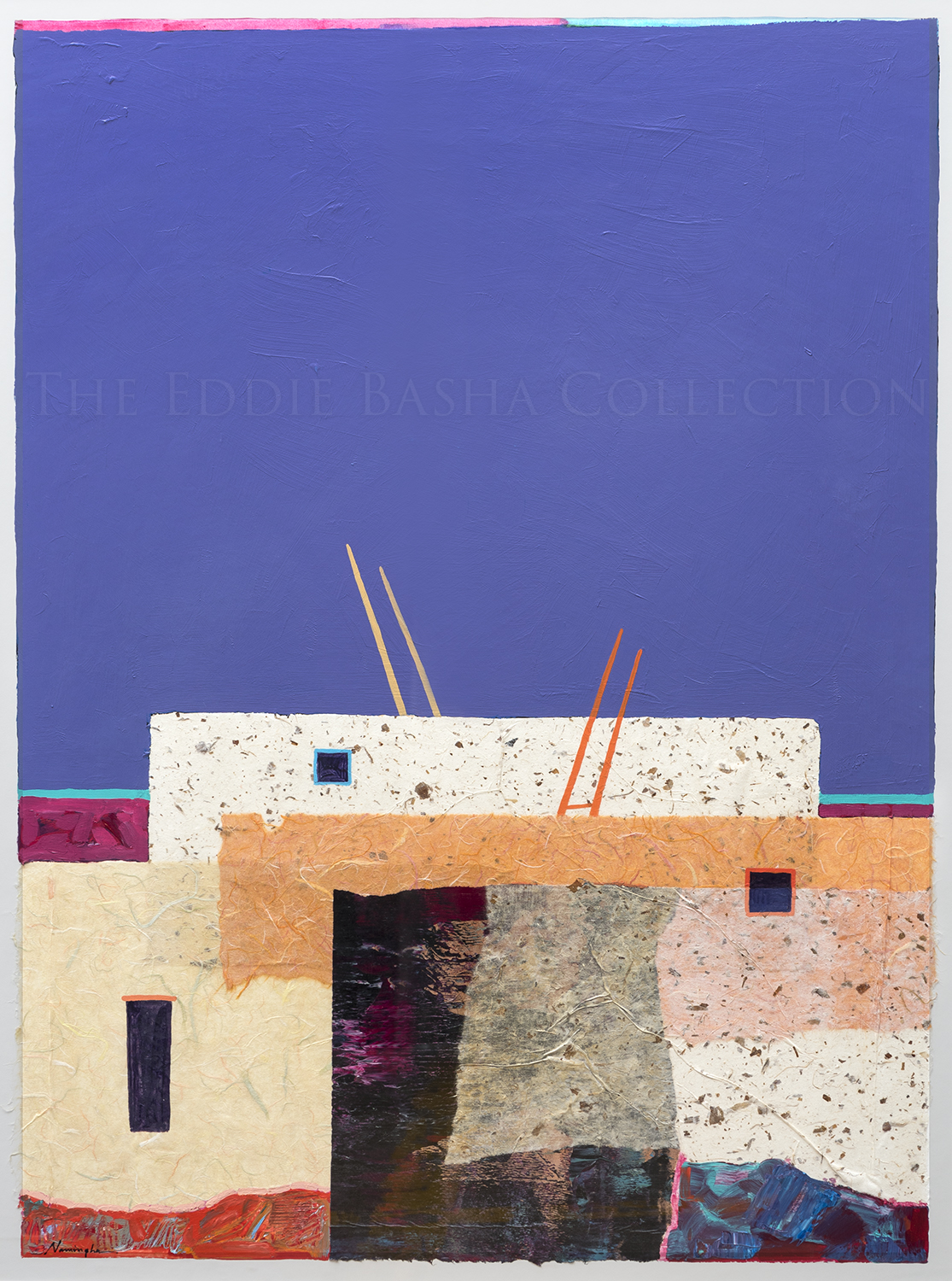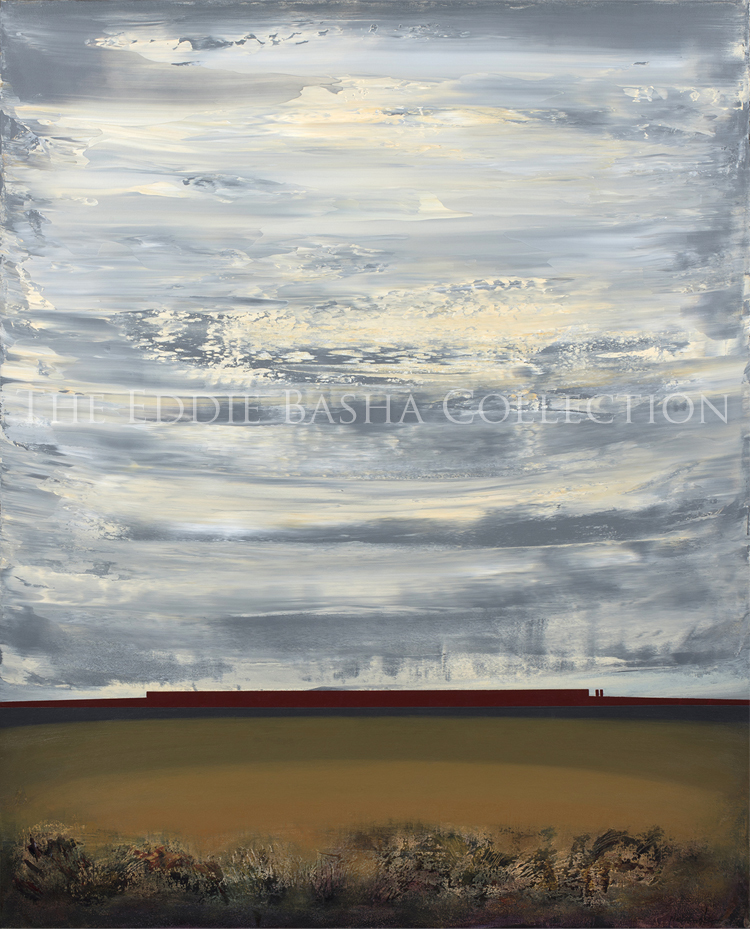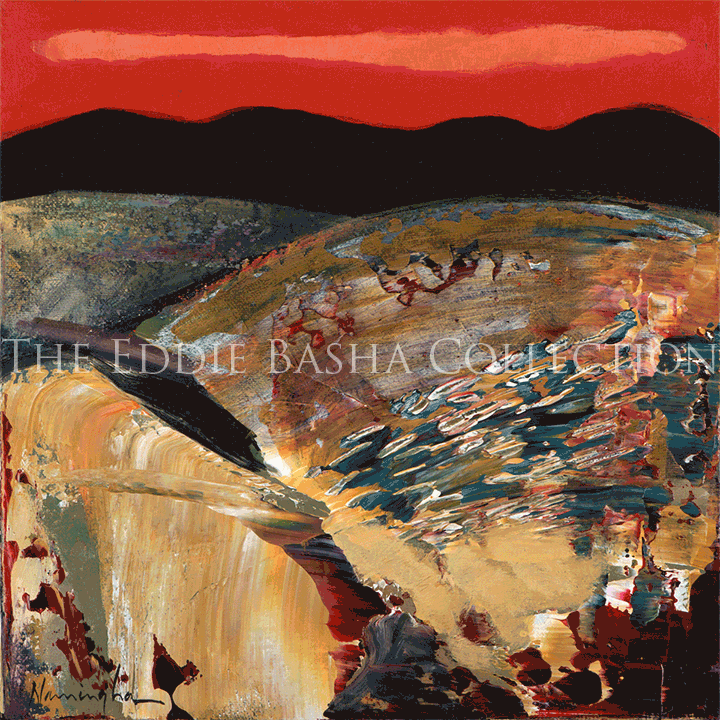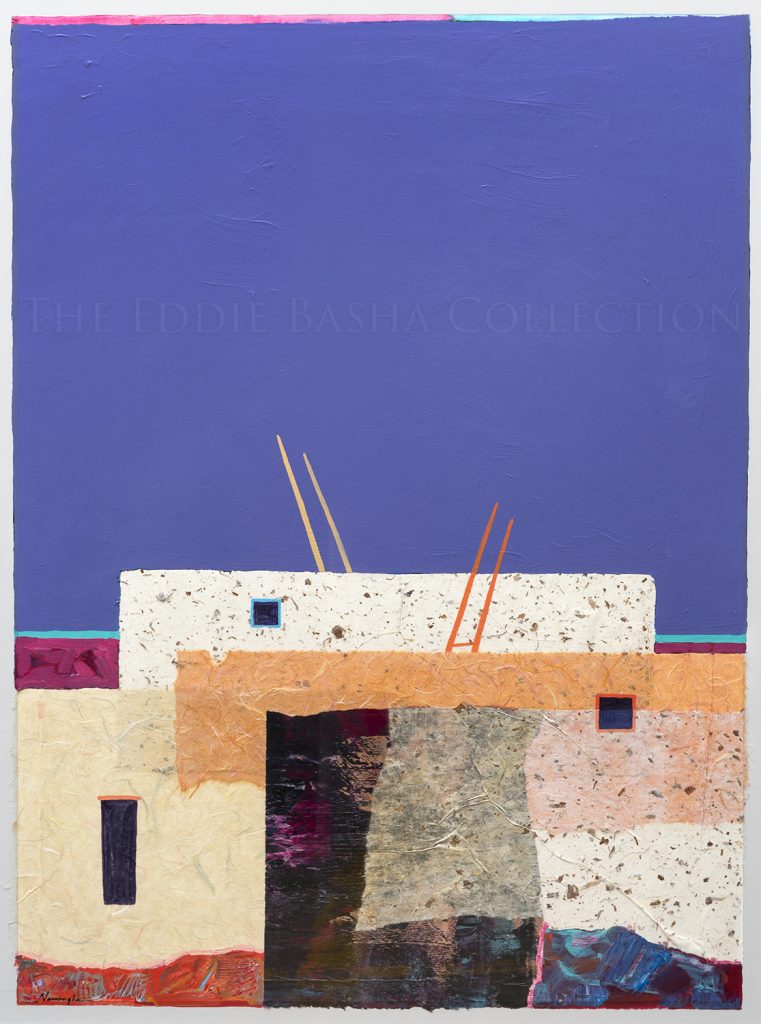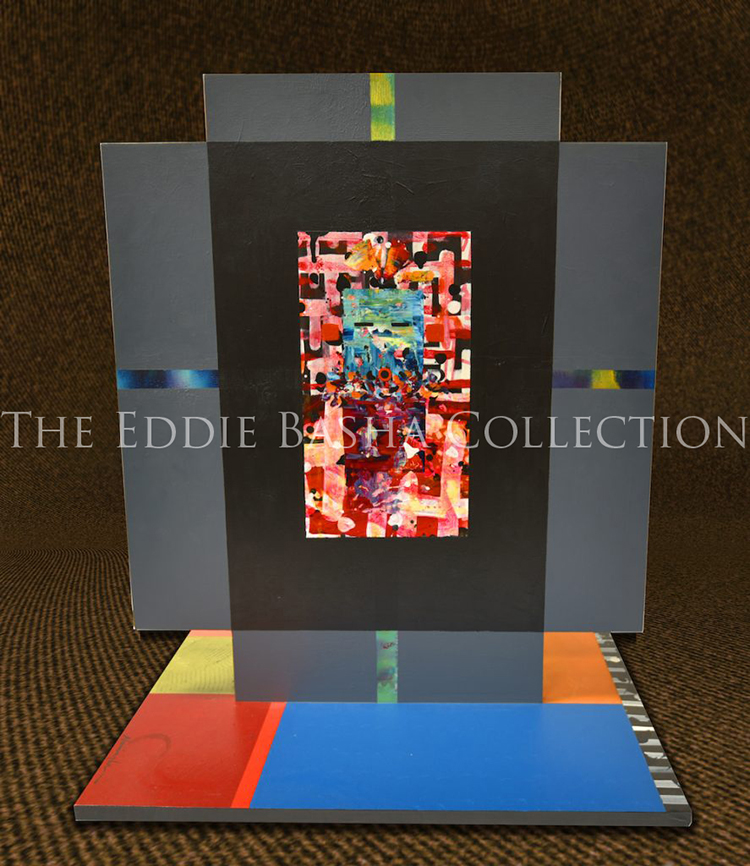
Dan Namingha
(b. 1950)
American Indian (Tewa-Hopi)
Born and raised in Arizona, Dan Namingha was raised in a family of noted Hopi potters. He now lives in New Mexico. Namingha’s artistic talent took him on a different path than that of his ancestors. He has become an internationally known contemporary artist whose work is in both public and private collections worldwide.
Drawing and painting throughout his childhood, prepared him for the future that lie ahead. He took art lessons at the Polacca Day School where he was exposed to watercolors and techniques of design. Following his participation in a summer art program at the University of Kansas, Namingha, at the age of 16, enrolled at the Institute of American Indian Art in Santa Fe. He studied there for two years prior to his enrollment at the American Academy of Art in Chicago. Artists like Rothko, Pollack and de Kooning were influential in his development as a modern abstract artist. However, it is Namingha’s respect for the earth and the spirit of his ancestry which are directly reflected in each and every piece.
At the age of twenty, Namingha joined the U.S. Marines and served from 1970 to 1972. Since then he has participated in individual as well as group exhibitions in galleries and museums worldwide. His work is on display in collections at the Heard Museum, Harvard University, U. S. Dept. of the Interior, U.S. Embassies in Brazil, Denmark & Bolivia, and the NASA Art Collection in Washington, D.C. just to name a few. In 1979, Namingha was commissioned to create a 27-foot-long mural at Sky Harbor International Airport in Phoenix, Arizona.
Numerous articles, books and films have featured the work of Dan Namingha. He is listed in Who’s Who in American Art and the International Biographical Center’s Men of Achievement. In 1996, he was selected by the Smithsonian Institution to create a commemorative lithography to celebrate its 150th anniversary.
Namingha often uses fragmented images of katsinam faces, the sun, rainbows, feathers and corn stalks in his work as well as pueblo structures and landscapes as recurrent themes. His magnificent symbolic art is represented sculpturally in wood and bronze as well.
The awards, recognition and accolades which have been bestowed upon this artist are numerous; pages in fact.
